“My oldest memory is when as a student I came here for the olive harvest. The purity and fragrance of the smell of the EVOO just after the pressing in our mill is so unique and it still makes me very happy.” -Lorenza Sebasti, CEO and Managing Director of Castello di Ama
Nestled in the bucolic hills of Gaiole in the heart of the Chianti Classico region of Tuscany at an altitude of almost 500 meters sprawls beautiful Castello di Ama (translating to “Castle of Love”), an estate comprising 90 hectares in grape vines and 40 in olive trees.
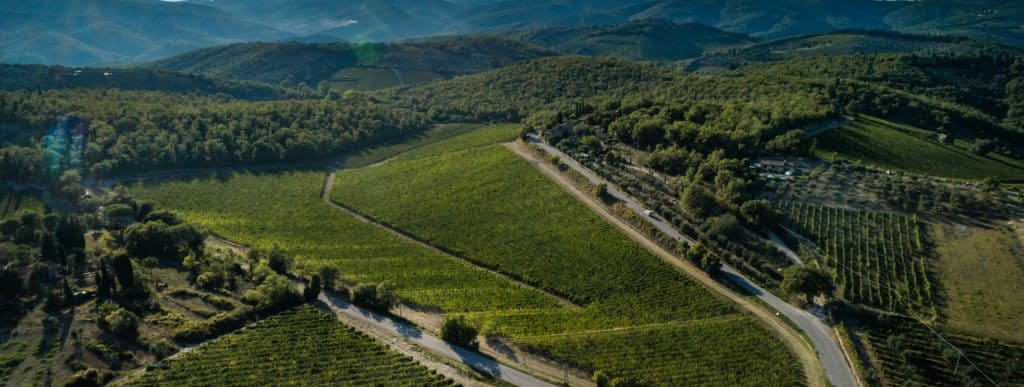
Dating back to pre-Roman times, Ama – an affectionate abbreviation of the estate – now not only grows and produces some of the finest and most-esteemed wines and olive oils, but hosts multiple permanent art installations which blend seamlessly with the land and its rich history. Ama has its own restaurant and the estate offers accommodations in a handful of their centuries-old villas and suites, lovingly and artistically restored by Lorenza Sebasti with a blend of contemporary and antique furnishings including Carrara marble, fireplaces, double-arched windows, plush chairs and sofas and a well-stocked bookcase.
“We have always wanted to maintain the special sense of place at Ama,” says Lorenza. “From the landscape to the ancient borgo, with XVIII centuries Villas to the work that we as custodians have put into the winemaking, the hospitality, and the art that exalts it.”
With a long and rich history dating back to Etruscan civilization, Ama indeed holds a special sense of place. The first references to the region’s vineyards and winemaking date back to 998. During a 15th-century Aragonese invasion, the fortress was destroyed.
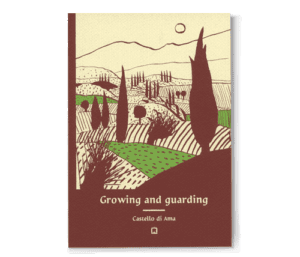 Later, in the early 1700s, new private residences for the Pianigiani and Ricucci families were constructed using the same stones on the same spot of land the castle once stood, dwellings which now comprise the Castello di Ama estate headquarters. The present day effect of blending the old and the new – the old stones to create newer structures; the seamless folding in of art installations; the updating of the villas with a melding of antiques and contemporary furnishings – speaks to the timelessness of land and space.
Later, in the early 1700s, new private residences for the Pianigiani and Ricucci families were constructed using the same stones on the same spot of land the castle once stood, dwellings which now comprise the Castello di Ama estate headquarters. The present day effect of blending the old and the new – the old stones to create newer structures; the seamless folding in of art installations; the updating of the villas with a melding of antiques and contemporary furnishings – speaks to the timelessness of land and space.
A 1773 document reports the Grand Duke of Tuscany, Leopold II, as the Governor of Tuscany, claiming Ama as “having the most beautiful hills and valleys of all of Chianti” [1] – the same hills of limestone soil with southern sun exposure that are so perfectly suited today to viticulture and olive growing.
The timelessness of the land brings to mind a quote by Italian writer Marcello Fois from “Growing and Guarding,” an exquisite, artistic book produced by Castello di Ama (and available here at Rogers Collection, contact us for more details) filled with poetic musings, writings, and beautiful illustrations and photography. Fois writes, “The sun rose over the hills, the same one as always, always new: ready to warm the vines and olive trees.” [2]
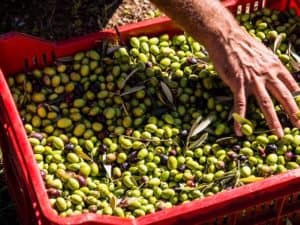
Ah, yes, the olive trees. 10,000 olive trees more precisely, at present moment, growing in the orchard slopes of Ama with varietals including Correggiolo, Moraiolo, Frantoio, and Leccino. The trees are maintained by hand for minimal intervention. One tree produces approximately one litre of oil, a low yield which enhances the quality. In a matter of hours after harvest, the olives are taken to a small pressing house located on the estate to be processed, ensuring preservation of aromas and nutritional value.
The olives are first crushed into a paste and then cold-pressed using a cold-extraction centrifuge to ensure low acidity. Next, the oil is delicately filtered through cotton wool and stored in stainless steel containers in an air-conditioned room away from light and air before bottling. The final product is an opaque oil with a vivid shade of green that gently fades to yellow with time, holding fruity, elegant and balanced aromas and earthy, herbal flavors with a lively, peppery finish.
“I can’t live without my EVOO,” Lorenza says. “I almost drink it and enjoy it with all kinds of food, from vegetables to cheese and meat…yet the best recipe is pouring just enough on a slice of authentic bread.”
Rogers Collection offers 250 ml and 500 ml bottles of Castello di Ama extra virgin olive oil.
How did Castello di Ama maintain this “special sense of place” over the centuries, embracing the same “fil rouge,” or common thread, that runs through everything at Ama – the land, the art, the wine, the olive oil, the hospitality; yet, allowing the estate to shift, grow, bloom and unfurl its potential?
“This desire to maintain a linear approach and consistent philosophy has allowed Ama to evolve over time,” says Lorenza, “and expand to reach many audiences, especially through our wines and of course our extraordinary extra virgin olive oil.”
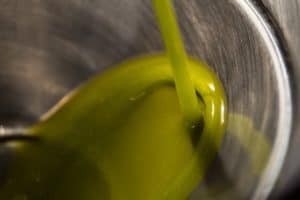
Although the land of Ama has centuries-long history of wine production and olive growing, it was in the 1970s that Ama started on the path to its most current incarnation. Three friends including Lorenza’s father, Lionello Sebasti, embarked on a project to restore vitality to the land, a project that would “change the destiny of Chianti” [3]. The trio replanted most of the vineyards at Castello di Ama and built a modern fermentation cellar that became an “innovative model for the entire area” [4].
In 1993, Lorenza became co-owner and CEO of Ama, joining Marco Pallanti, who in 1982 as an up-and-coming agronomist trained extensively at University of Bordeaux, came on board as their winemaker and technical director.
With the vineyards, fermentation cellar, and olive groves well-tended to, Lorenza decided to expand the estate to include art installations creating at Ama a “microcosm of time, history, nature, and art“ [5]. In 1999, Lorenza first invited artists to Ama in collaboration with the Galleria Continua in San Gimignano.
“Our intention for the project was to reconnect the past and future through works of art by artists all over the world,” Lorenza said in an interview with Darling magazine.
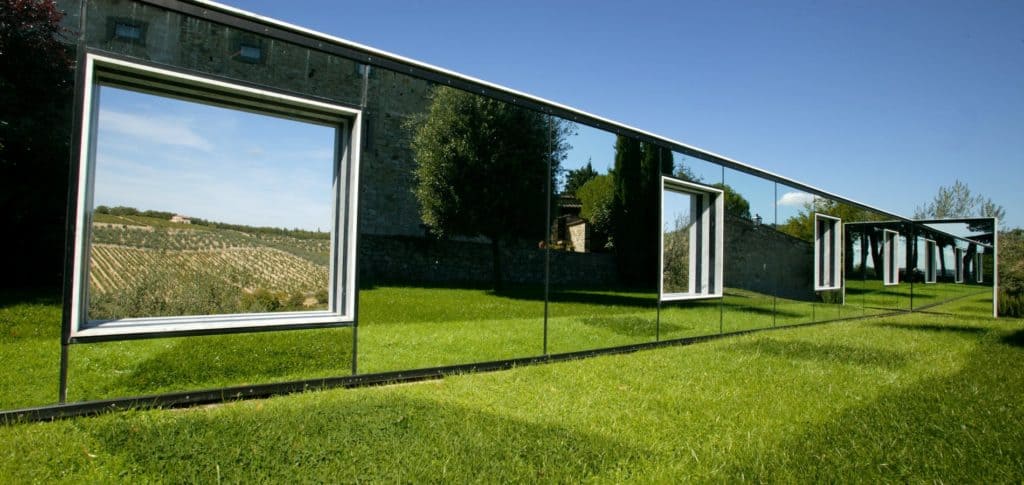
Although occasionally there has been a year with no new commission, on average there has been a new art edition each year. “The growth of the art project has been organic rather than schematic,” writes Smith. “There is nothing monumental here, nothing portentous or overblown, nothing that does not blend harmoniously with the landscape.” [6]
“I am inspired by many great artists, specifically Louise Bourgeois,” [7] said Lorenza in an interview with Darling magazine in 2020. Bourgeois is a sculptor who developed an art installation titled “Topiary” at Castello di Ama in 2009.
“My encounter with her was extremely important to help me dig more into myself and understand my limits and ambitions versus listening to my soul,” Lorenza says. [8]
Smith eloquently describes the connection between all of discrete yet connected elements of Ama: “At Castello di Ama, food, wine, olive oil, and art are component parts of an all-embracing, almost holistic experience…the metabolism of the body is brought into sync with the metabolism of the place.”
For a place so rooted in history, yet always broadening and rising to new ideas and creativity, what is next?
“My wish is to be able to maintain a very active role in the estate, whether it’s choosing décor for our five in-house suites or tasting library vintages of our wines or planning travels and sharing news from the estate with our global network of partners,” says Lorenza. “My hope for the future of our estate is always bringing the products of Castello di Ama out into the world as a small way of bringing this special place directly to them, which in the end, is my utmost priority.”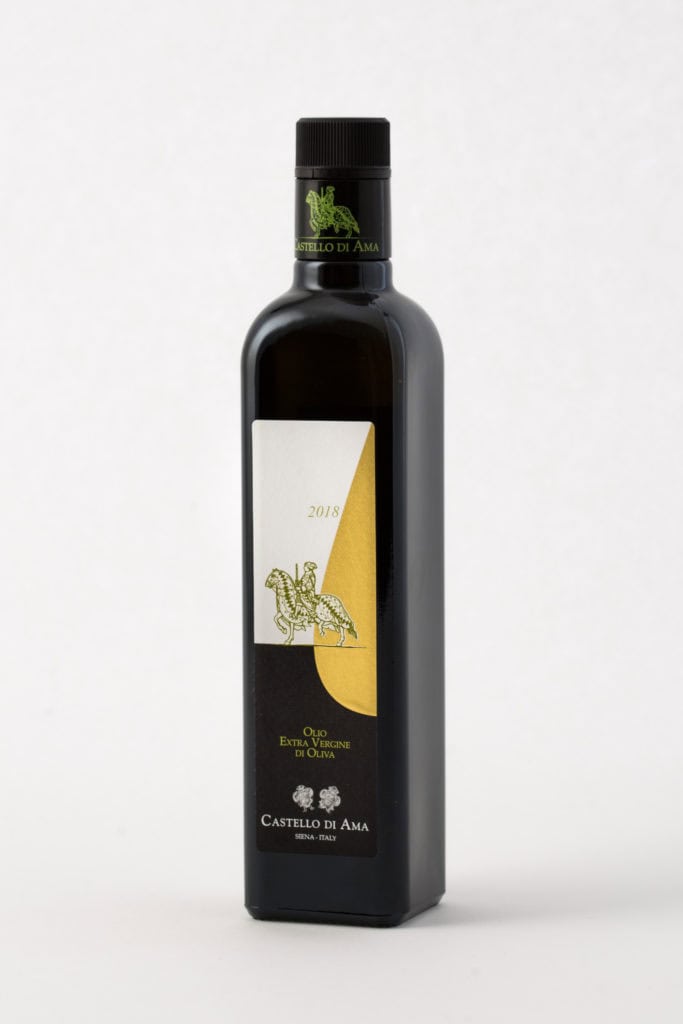
[1, 2, 5, 6]Marcello Fois, Philip Larratt-Smith, Marco Pallanti. Federico Maggioni (illustrations). Growing and Guarding. Maurizio Corraini s.r.l 2015.
[3, 4]Castello di Ama website.
[7, 8] Valeriote, Elena. “Meet Lorenza Sebasti: The Renaissance Woman of WInemaking.” Darling,. July 6, 2020
Written by Leska Tomash
CASTELLO DI AMA EVOO 250mL & 500mL